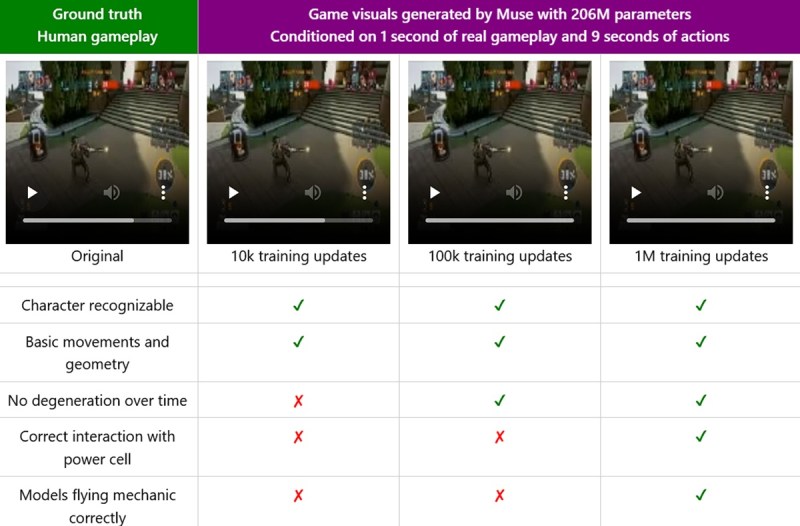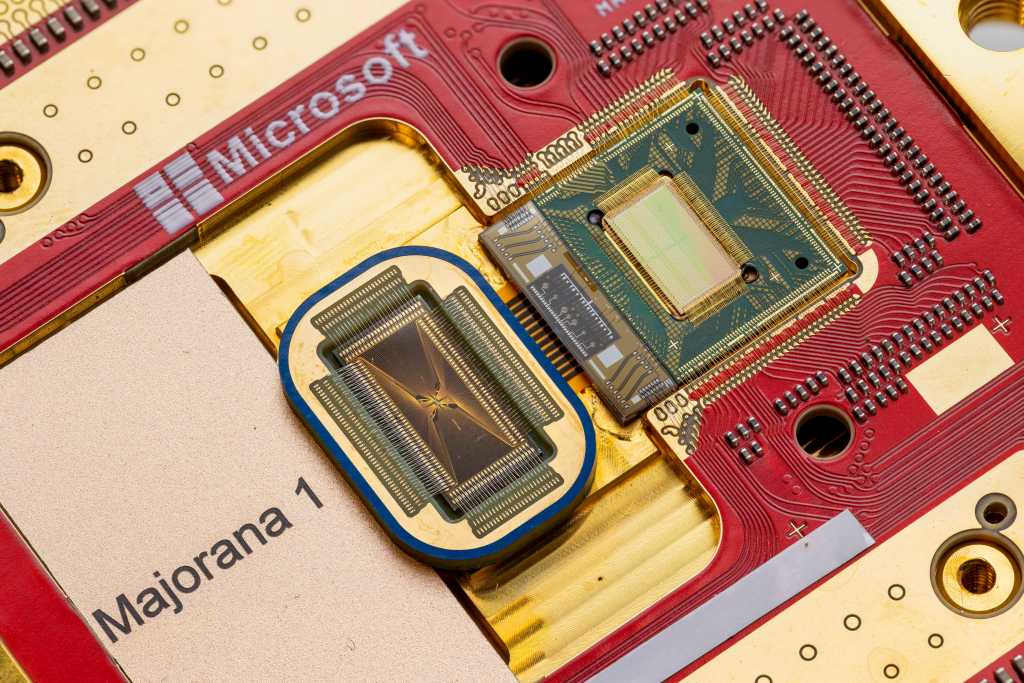Join our daily and weekly newsletters for the latest updates and exclusive content on industry-leading AI coverage. Learn More
Microsoft Research unveiled Muse, the company’s first generative AI model designed for gameplay ideation.
Fatima Kardar, corporate vice president of gaming AI at Microsoft, said in a blog post that we hear about how AI is transforming our lives daily. How will it show up in gaming?
For Xbox, the principles that drive our approach to AI are to create more value for players and game creators, bring more games to more people around the world, and recognize that the development of a great game will always be grounded in the creator’s vision and artistry, Karder said.
“We believe generative AI has the potential to enhance this creativity and unlock new possibilities. We’re excited to announce a generative AI breakthrough, published today in the journal Nature and announced by Microsoft Research, that demonstrates this potential— including the opportunity to make older games accessible to future generations of players across new devices and in new ways.
In partnership with Xbox Games Studios’ Ninja Theory, Microsoft Research developed a world and human action model (WHAM) named Muse: a first of its kind generative AI model trained on Ninja Theory’s multiplayer battle arena game Bleeding Edge. Ninja Theory and Microsoft Research are both based in Cambridge, which made collaboration easy and led to the use of Bleeding Edge for this research.
What’s groundbreaking about Muse is its detailed understanding of the 3D game world, including game physics and how the game reacts to players’ controller actions. This allows the model to create consistent and diverse gameplay rendered by AI, demonstrating a major step toward generative AI models that can empower game creators.
Microsoft Research initially set out to explore how generative AI models can support new experiences, focusing on developing AI capabilities that could allow game developers to ideate and expand upon their work in new ways. To accomplish that, they interviewed 27 global game creators—from indies to AAA game studios—to make sure the research was shaped by the people who would use it. To allow other research teams and game developers to explore the model and experiment with its capabilities, Muse, its model weights, sample data, and interactive interface are now all available on Azure AI Foundry.
What Muse Means for Gaming

Although it’s still early, this model research is pushing the boundaries of what the team thought was possible.
“We are already using Muse to develop a real-time playable AI model trained on other first-party games, and we see potential for this work to one day benefit both players and game creators: from allowing us to revive nostalgic games to faster creative ideation,” Karder said.
Today, countless classic games tied to aging hardware are no longer playable by most people. Thanks to this breakthrough, Microsoft is exploring the potential for Muse to take older back catalog games from studios and optimize them for any device.
“We believe this could radically change how we preserve and experience classic games in the future and make them accessible to more players. To imagine that beloved games lost to time and hardware advancement could one day be played on any screen with Xbox is an exciting possibility for us,” Karder said.
Karder added, “Another opportunity we are exploring is how Muse can help game teams prototype new gameplay experiences during the creative process and introduce new content—taking games players already love and enabling our developers to inject new experiences for them to enjoy, or even enable you to participate in the creation process. We’ll create opportunities for people to participate in this exploration, starting with short interactive AI game experiences for you to try on Copilot Labs very soon.
There’s still so much for us to discover, and we can’t wait to share more.”
Xbox’s approach to Generative AI

Xbox has been innovating with AI and machine learning for decades, including in partnership with Microsoft Research—constantly working to find ways to delight players, and harness new computing capabilities to bring creative visions to life. While AI isn’t new to gaming, Microsoft is now seeing an acceleration of generative AI research, both within Microsoft and across the broader technology community.
“We believe it’s important to shape how these new generative AI breakthroughs can support our industry and game creation community in a collaborative and responsible way,” Karder said.
For Xbox, game creators will always be the center of overall AI efforts, she said. Microsoft believes there is space for traditional game development and future generative AI technologies that serve as an extension
of creative work and offer novel experiences, she said.
“As part of this, we have empowered creative leaders here at Xbox to decide on the use of generative AI. There isn’t going to be a single solution for every game or project, and the approach will be based on the creative vision and goals of each team,” Karder said.
What’s Ahead?

Microsoft is focused on how AI can address the barriers and frictions to playing and developing games.
“This means that we’ll share our AI product innovation earlier on, providing opportunities for players and creators to experiment with and co-build new AI features and capabilities with us. This allows us to make sure that our AI innovations address real problems and add new value to creating or playing with Xbox, Karder said.
To develop tools that are used in ways that benefit everyone, Karder said the innovation will continue to be built on a commitment to Responsible AI and dedication to developing AI solutions guided by six
principles: fairness, reliability and safety, privacy and security, inclusiveness, transparency, and accountability.
“You can expect more exciting announcements this year about how we are using AI to empower game creators and provide the best possible player experience across all devices.
Meanwhile, Katja Hofmann, senior principal research manager and lead of the Microsoft Research Game Intelligence team, said in a blog post that the journal Nature published the company’s research on Muse, which is a generative AI model of a video game that can generate game visuals, controller actions or both. The company says it is the first World and Human Action Model (WHAM).
Microsoft Research Game Intelligence(opens in new tab) and Teachable AI Experiences teams created Muse in collaboration with Xbox Games Studios’ Ninja Theory, the maker of the Hellblade games.
To help other researchers explore these models and build on our work, Microsoft is open sourcing the weights and sample data and making the executable available for the WHAM Demonstrator—a concept prototype that provides a visual interface for interacting with WHAM models and multiple ways of prompting the models. Developers can learn and experiment with the weights, sample data, and WHAM Demonstrator on Azure AI Foundry.
In the research, the team focused on exploring the capabilities that models like Muse need to effectively support human creatives.
“I’m incredibly proud of our teams and the milestone we have achieved, not only by showing the rich structure of the game world that a model like Muse can learn, as you see in the video demo below, but also, and even more importantly, by demonstrating how to develop research insights to support creative uses of generative AI models,” Hofmann said.
Daily insights on business use cases with VB Daily
If you want to impress your boss, VB Daily has you covered. We give you the inside scoop on what companies are doing with generative AI, from regulatory shifts to practical deployments, so you can share insights for maximum ROI.
Read our Privacy Policy
Thanks for subscribing. Check out more VB newsletters here.
An error occured.























